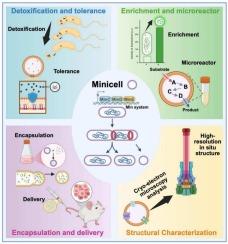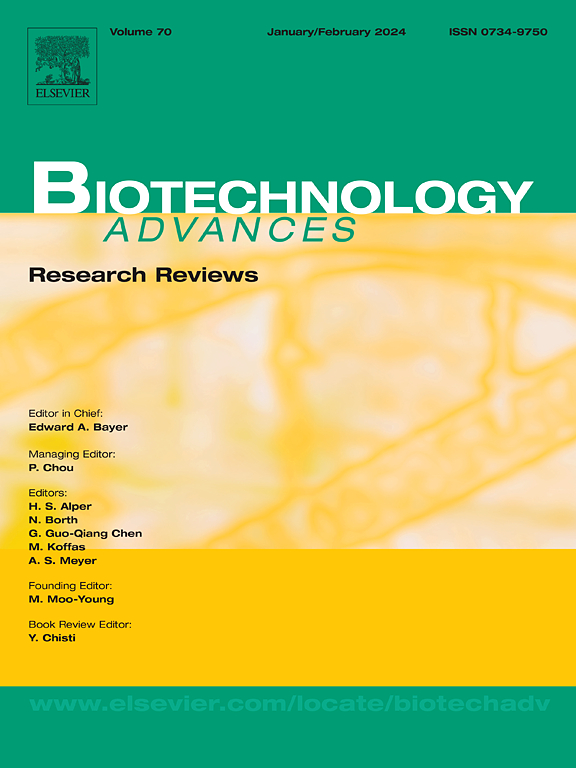微型电池生产与应用技术进展综述。
IF 12.5
1区 工程技术
Q1 BIOTECHNOLOGY & APPLIED MICROBIOLOGY
引用次数: 0
摘要
微细胞是大多数杆状细菌的两极通过不对称分裂形成的无核细胞。它们没有染色体,不能繁殖。这赋予了微细胞独特的生物学优势,如细胞膜中较高的心磷脂含量,保留来自亲本细胞的代谢活性,以及降低的核质比,使微细胞在合成生物学、农业和医学方面的应用前景广阔。本文首先综述了各种杆状细菌中微细胞的形成机制,以及它们的分离方法和生产现状。然后,它全面总结了迷你细胞的最新和强大的应用,而不仅仅是传统的药物输送。从微细胞的生物学特性出发,综述了微细胞的解毒与耐受性、富集与微反应器、分子包封与传递、天然结构表征等四大功能。最后,讨论了微细胞在生物技术应用中的挑战和未来前景。本文章由计算机程序翻译,如有差异,请以英文原文为准。

Advances in production and application technologies of minicells: A review
Minicells are anucleate cells formed through asymmetric division at the poles of most rod-shaped bacteria. They lack chromosomes and are incapable of reproduction. This confers on minicells unique biological advantages, such as a higher content of cardiolipin in the cell membrane, retention of metabolic activity from the parent cells, and a reduced nucleocytoplasmic ratio, making minicells promising for applications in synthetic biology, agriculture, and medicine. This review first outlines the formation mechanisms of minicells in various rod-shaped bacteria, along with their isolation methods and current production status. It then comprehensively summarizes the latest and powerful applications of minicells that do not focus solely on traditional drug delivery. Based on the biological characteristics of minicells, the review highlights their four major functions, including detoxification and tolerance, enrichment and microreactor, molecular encapsulation and delivery, and native structural characterization. Finally, the challenges and future prospects of minicells in biotechnological applications are discussed.
求助全文
通过发布文献求助,成功后即可免费获取论文全文。
去求助
来源期刊

Biotechnology advances
工程技术-生物工程与应用微生物
CiteScore
25.50
自引率
2.50%
发文量
167
审稿时长
37 days
期刊介绍:
Biotechnology Advances is a comprehensive review journal that covers all aspects of the multidisciplinary field of biotechnology. The journal focuses on biotechnology principles and their applications in various industries, agriculture, medicine, environmental concerns, and regulatory issues. It publishes authoritative articles that highlight current developments and future trends in the field of biotechnology. The journal invites submissions of manuscripts that are relevant and appropriate. It targets a wide audience, including scientists, engineers, students, instructors, researchers, practitioners, managers, governments, and other stakeholders in the field. Additionally, special issues are published based on selected presentations from recent relevant conferences in collaboration with the organizations hosting those conferences.
 求助内容:
求助内容: 应助结果提醒方式:
应助结果提醒方式:


